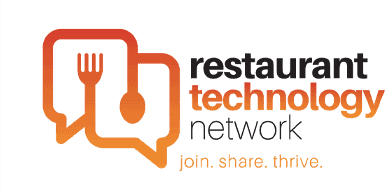With COVID-19 causing an explosion of alternate service models across the country and around the world—curbside pickup, mobile menu browsing, and contactless payment, and more—restaurant owners who weren’t already offering delivery have been presented with a confounding choice: should they execute delivery services in-house, or should they opt for one of an increasing number of third-party delivery services?
Even before the rise of the pandemic, consumers’ growing penchant for convenience had led to the rise of such third-party players as Postmates, Uber Eats, and Grubhub, and the trend show no signs of slowing.
Here are some of the top pros and cons of in-house vs third-party delivery:
Control
By keeping delivery under your own roof, your restaurant can maintain control over the experience from beginning to end.
Whether customers choose to order from you again often comes down to whether or not they’re satisfied with previous delivery experiences. By managing the delivery process in-house, you can train your delivery staff to your own standards instead of putting the customer service experience into the hands of others who may not share your service philosophy.
Running your delivery in-house also means you have full accountability for late, messy, or cold orders. Delivery platforms have procedures in place to make up for poor delivery experiences, such as free vouchers for future purchases, so you may want to consider whether that’s something your restaurant is able and willing to do as well.
Restaurants need to decide whether they want to handle delivery experiences themselves or leave that important process up to a third party.
Visibility
The numbers indicate that 78% of US delivery orders are placed through the restaurant itself, while 22% of orders are made through third-party delivery services. That means that when your customers are looking to order that specialty pasta dish that you’re so famous for, they’re calling you. They’re visiting your website.
If they find that they have to look elsewhere to place their order—like on a third-party site that also lists your competitors—they may just choose to spend their money with another business.
Not signing up with delivery partners, however, can potentially result in a decreased opportunity for visibility with customers. It mainly depends on your market and clientele—do you have lots of loyal customers who will call you or visit your site directly when they want to order take-out?
Or are you trying to build a solid base of new customers, who might not know your brand and are more likely to find you on a third-party site?
Each platform comes with its own target audiences and loyal users, and you may not be able to reach those customers on your own. This increased discoverability can be an especially powerful marketing tool for small-size businesses and startups. And since you can work with as many delivery partners as needed, doing so can help expand your reach considerably.
Logistics
Setting up delivery services requires not only capital, but it also requires expertise. Will you purchase a fleet of delivery vehicles, or will you pay your drivers to use their own? What about a payment system, insurance for drivers, proper food storage during transport, and delivery tracking? These are a few of the many factors to consider when you’re setting up in-house delivery.
Partnering with online ordering platforms gives you the opportunity to avoid many of the investments listed above. You can benefit from a ready-made infrastructure, a network of couriers, a range of packaging materials, delivery tracking, secure payment methods, and more.
Cost
While third-party services can certainly save you money on some of the above investments, those savings may be quickly negated by hefty commission fees. Depending on your business volume and your margins, these fees may not be a feasible option, regardless of the experience and infrastructure you get in return.
Focus
Perhaps one of the most important things to consider, especially for smaller operations, is that outsourcing delivery services allows you to focus more completely on your core business: crafting an unforgettable customer experience and preparing delicious food that keeps customers coming back for more.
Both in-house and third-party delivery come with distinct drawbacks and advantages. One thing is certain, though. In this time of COVID-19, delivery is a convenience that customers are quite simply going to expect. From everyone. If you’re not offering it, you’re likely losing revenue dollars and loyalty to those who are.
In choosing your course of action, however, be sure to balance the options outlined above to determine which type of delivery is the best fit for your business.





